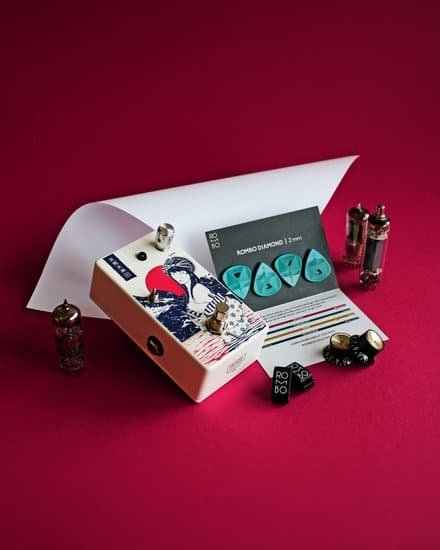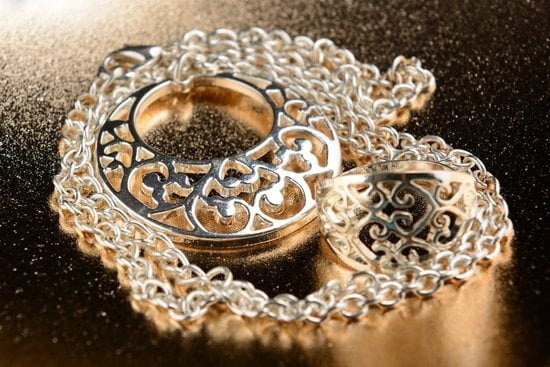Introduction
It is important to understand the type of jewelry that won’t turn green, since many people experience allergic reactions to certain materials used in costume jewelry. Costumes jewelry often contains metals that can cause irritation in some people and cause their skin to become discoloured or react negatively. Knowing which materials are safe and which are not can help you choose pieces that won’t cause an allergic reaction.
Certain metals such as sterling silver and stainless steel must contain a certain amount of alloy during the manufacturing process – this helps to prevent discolouration of the metal over time. Gold (which can come in a variety of colours including white, yellow, rose and two-tone) are also considered safe for wearing without the risk of turning green. Platinum, palladium and titanium are other options which usually remain free from discolouration, whilst copper should be avoided as it often changes colour overtime.
The Science Behind Why Jewelry Can Turn Green
When jewelry turns green, it is typically due to a chemical reaction between the metals used to make the jewelry and environmental factors such as sweat, humidity, or other acids and alkalis. Copper and its alloys, like brass, bronze and silver are particularly susceptible to this kind of reaction because they contain varying amounts of elements like tin, nickel, zinc and lead. In certain conditions where these metals come into contact with oxygen and chlorides (often found in sweat), a corrosion process known as oxidation takes place. This produces copper salts which often appear green on the surface of the metal.
In order to prevent jewelry from turning green, it’s important to choose materials that are not susceptible to oxidation/corrosion. Examples include non-metal materials such as shells, stones, glass beads or plastic parts; precious metals such as gold, platinum or rhodium; or alloys made of gold (such as white gold) or stainless steel which contains iron but is often combined with chromium and other metals which resist corrosion. By using non-corrosive jewelry-making materials that won’t react when exposed to air or moisture, you can avoid unsightly tarnishing or discoloration.
Different Types of Materials Used in Jewelry
Metals: Metals like sterling silver, platinum, and gold are less likely to turn green as they are non-porous materials that do not react to chemicals or moisture. Gold is particularly resistant to corrosion and often referred to as hypoallergenic because it is more stable than other metals. The main problem with these types of metals does arise when the piece is plated. Plating is the process of coating a metal with a thin layer of another metal for decorative effect or durability enhancement. In this case, the underlying metal may oxidize and cause greening.
Stones: Precious stones like diamonds, rubies, sapphires, topaz and many others are also resistant to green discoloration due to their composition. However, semi-precious stones such as jade and quartz may lower the overall stability of the piece if exposed to moist environments. When purchasing jewelry with gemstones it’s important to consider if any treatments have been applied during its production. Gemstones can sometimes be treated for color enhancement which can strip away some of its original luster leading it more prone to discoloration over time.
Crystals: Similar to gemstones crystals cannot turn green on their own but certain treatments (such as surface coating) can increase the chances of greening effect in the long run when exposed to moisture or oil based products. A good practice would be checking the material specifications prior buying and making sure proper care instructions are provided by manufacturer. Small details such as avoiding contact with water or synthetic oils can help maintain crystal jewelry’s aesthetics over time by reducing oxidation process
Organic Materials: Organic materials found in jewelry fall into two categories; organic gems such as pearl, coral and amber plus synthetic materials such as plastic based enamels used mainly for coloration purposes in costume jewelry pieces These materials are essentially non-porous so they don’t react or corrode easily meaning that there’s less chance for them to turn your skin or clothes green after contact. Overall organic gems tend to last longer than other components if treated properly allowing you enjoy their aesthetic qualities for a long period of time without much worry about wear & tear
What Types of Jewelry Won’t Turn Green?
MATERIALS:
1. Metals/Alloys: Certain metals and alloys are known for not turning green due to oxidation, such as stainless steel, titanium, tungsten, silver, and gold (especially 18-karat or higher). Platinum also has a very low rate of oxidation and tarnishing. These metals offer good protection against corrosion.
2. Stones/Crystals: Stones such as sapphire, diamond, cat’s eye moonstone and quartz will not turn green when exposed to air or perspiration. Similarly, any crystal that is cut or treated with protective coatings will usually remain non-reactive to oxidization.
3. Organic Materials: Organic materials like wood and horn make excellent jewelry that won’t turn green with time. Horn can be bleached to remove dirt from its surface; meanwhile wood should never be bleached as this may damage the natural finish of the wood grain. Lastly, polymer clay is another great option for an organic material that won’t turn green over time since it’s plastic-based and breathable.
Taking Care of Jewelry to Reduce the Risk of Turning Green
Taking proper care of your jewelry is the key to preventing it from turning green. To reduce the risk of your jewelry turning green, you should:
1. Keep it away from water: Avoid getting your jewelry wet and don’t wear it while swimming or showering, as this increases the risk of tarnishing and corrosion.
2. Avoid direct contact with cosmetics: Perfumes and other cosmetics contain chemicals that can damage your jewelry over time, so avoid wearing it while using these products or even while applying makeup to prevent discoloration.
3. Store in a dry area: Store your jewelry in a dry area away from moisture to prevent oxidation and help keep it in its original condition for longer. Be sure that if you are storing pieces together that they are not touching each other in order to reduce any scraping or friction between them which could cause tarnishing or discoloration over time.
4. Clean regularly: Cleaning your jewelry with a soft cloth will help minimize dirt buildup and keep its appearance looking like new for longer periods of time. It is also important to use the appropriate cleaning solution specific to the type of metal used in order to enhance its shine without damaging it or fading any of its coloring over time.
Avoiding Jewelry that Contains Low Quality Materials
Low quality jewelry materials are often associated with turning green due to oxidation or corrosion. Examples of materials prone to oxidizing and rusting include untreated metals like iron, nickel, stainless steel, aluminum, and bronze. If not treated properly, these metals will corrode and will turn the skin green where they’re in constant contact. Jewelry made from these metals should be avoided due to their propensity to easily tarnish.
An example of a material that won’t turn green is gold. Gold is naturally resistant to frequent jewelry cleaning agents such as mild acids and organic solvents. High-quality gold plated pieces also may contain protective additional layers or coatings that make them even more resistant against wear and discoloration over time. Silver is also a durable metal which has the advantage of being long lasting but needs regular polishing to keep it looking shiny since tarnish is one of its primary drawbacks.
When purchasing jewelry, it’s important to research the type of materials used in its construction and purchase from sources that use high-quality materials that won’t rust or tarnish easily over time. Additionally, be sure to select pieces made by reputable designers using proper techniques and treatments as they will offer better protections against tarnishing than those who don’t pay attention to details during production.
Conclusion
When it comes to jewelry, there are certain types of materials that won’t turn green over time. These materials include sterling silver, gold, white gold, and platinum. Moreover, it is important to properly care for your jewelry by avoiding chemical products such as chlorine that can cause damage and discoloration. Furthermore, when selecting jewelry items, be sure to look for high-quality materials in order to avoid any discoloring or oxidation problems.
Ultimately, jewelry should be an expression of who you are and a reflection of your personal style. It is important to remember that when shopping for jewelry, ask questions about the quality of materials used and make sure that the piece you select won’t turn green over time. Paying attention to the materials used will mean that you enjoy a beautiful piece of jewelry for many years to come.

Welcome to my jewelry blog! My name is Sarah and I am the owner of this blog.
I love making jewelry and sharing my creations with others.
So whether you’re someone who loves wearing jewelry yourself or simply enjoys learning about it, be sure to check out my blog for insightful posts on everything related to this exciting topic!





